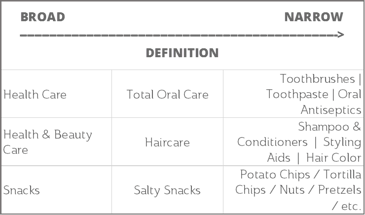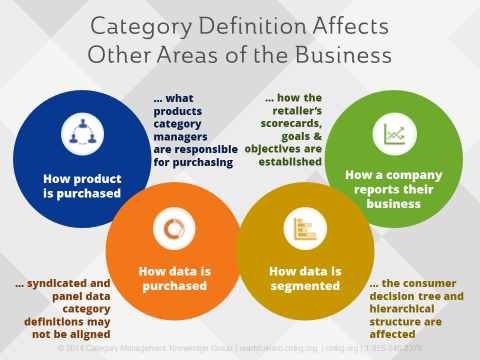Determining the best definition for categories (including their segments) is one of the core foundations in category management. In its simplest form, defining categories is about what items belong in a category based on Shopper expectations — and this responsibility belongs to the Retailer. It sounds like an easy task, but in practice, it is not because there are many considerations in this strategic component of category management.
Here are some great resources from CMKG for you to get started:
- Category Definition & Segmentation course preview (video)
- Category Definition complimentary download
- Category Definition & Segmentation certified course details
Before you define your categories, read these 3 considerations.
1. Category Definitions need to start with the Shopper!
Remember the Shopper? They’re the ones going in retail stores looking for the categories and products that they want to purchase. You want to make this easy — and that starts with proper definitions. Maximize your opportunity for success by grouping products together based on products that deliver the solution to a similar consumer need, are substitutable in consumer usage and/or have similarities that when managed together create a total effect for the Shopper.
2. Category Definitions are affected by Retailer format, strategies, category role and their target Shopper
How the term ‘category’ is defined is also essential to achieving success for your store. A meaningful way to achieve clarity and a shared common business language definition for “category” is to consider its many applications. Considerations for your retail format, programs, store layout, and category roles will affect how you define different categories. These definitions become the foundations for your unique Retailer Strategy.
Categories that are larger and more important to the Retailer and their Shoppers will usually have a more narrow definition, while ones that are less important will have a broader one. Here are some examples of broad and narrow definitions:

3. Category Definitions affect different areas of the business
It’s important for Retailers to get the definitions of their categories right because it directly affects other areas of the business. And sometimes the definitions are determined based on internal and external influences that have nothing to do with the Shopper (see my diagram below) including how product is purchased, how a company reports their business, how data is purchased and how data is segmented. The definition of a “category” can differ based on the Retailer, Vendors and 3rd party data vendor (like Nielsen or IRI) definition. And this definition drives all of the data and analysis and results for the category.

In net, defining and segmenting categories is one of the foundations for a successful Retailer strategy. And it’s not as easy or obvious as you may think. Ensure that you incorporate all of the considerations above and maintain the definitions as they change and as new ones evolve. Once you’ve got the categories defined, you need to determine the category segments based on the consumer decision tree.
If you’d like more information on Category Definition & Segmentation, we have a certified category management training course that will walk you through these 3 considerations and more so that you can make the best decisions on how to define your categories.








